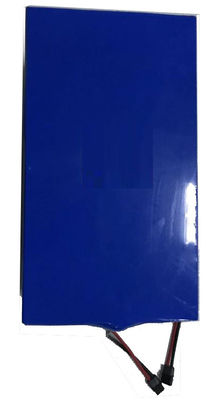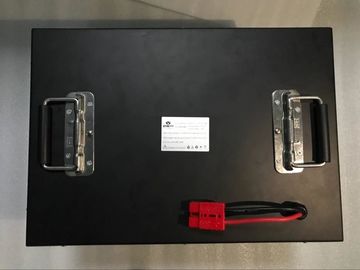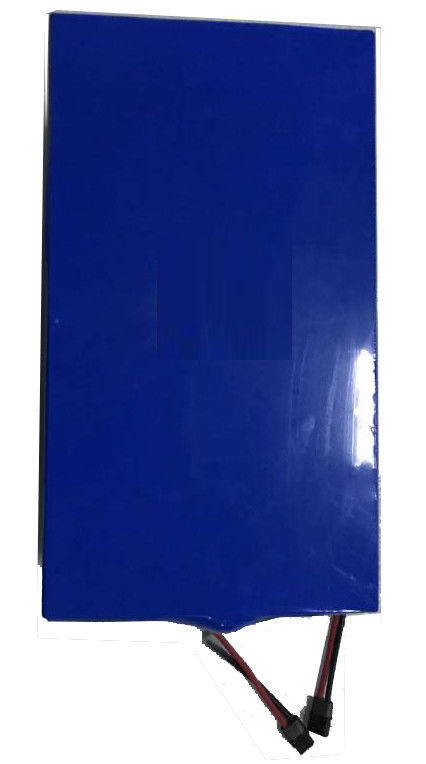Automatically Balance Lithium Iron Battery Short Circuit Protection For Energy Storage
Product Details:
| Place of Origin: | CHINA |
| Brand Name: | HRD OR OEM |
| Certification: | CE |
| Model Number: | CPLI-12V*7.5AH |
Payment & Shipping Terms:
| Minimum Order Quantity: | 50 |
|---|---|
| Packaging Details: | Standard for export |
| Delivery Time: | ING |
|
Detail Information |
|||
| Brand: | HRD OR OEM | Model: | CPLI-12V*7.5AH |
|---|---|---|---|
| Certification: | CE | Application: | Energy Storage Use. |
| Feature1: | Protection Functions | Feature2: | Charge/Discharge With Same Port |
| Highlight: | 12v lithium iron battery,lithium ion rechargeable battery |
||
Product Description
1 Scope
This product specification only applies to the lithium iron phosphate-base Lithium-ion battery module that supplied by HRD POWER
2 Product & Model
Product:Phosphate-base Lithium-ion Battery Pack with BMS control system.
Model:CPLI-127.5AH
CP – LI – 12 – 7.5AH
Factory code – Cell type – Voltage – Capacity
3 Technical Specification
3.1 Main Functions
(1) Suitable for energy storage use. High efficiency, long life and high reliability;
(2) High precision voltage sample;
(3) Protection functions:
◇ Over and under voltage protection of entire pack and single cell;
◇ Charge and discharge over current protection;
◇ Charge and discharge over or under temperature protection;
◇ Short circuit protection;
(4) Intelligent cell equalization management. Automatically balance each cell through passive balancing method;
(5) Charge/Discharge with same port
3.2 Technical Parameters
| Item | Parameters | Remark |
| Model | CPLI-127.5AH | |
| Rated Voltage(V) | 12 | |
| Typical Capacity(Ah) | 7.5 | 25℃ 1C discharge |
| Standard Charge Voltage(V) | 14.6 | |
| Maximum Charge Current(A) | 3.5 | |
| Maximum Discharge Current(A) | 5 | |
| Over-charge protection voltage (V) | 14.6 | |
| Over-discharge protection voltage (V) | 8.4 | |
| Over-charge protection voltage of single cell(V) | 3.75 | |
| Over-discharge protection voltage of single cell (V) | 2.1 | |
| Over-discharge protection current (A) | 15 | |
| Maximum Temperature Protect at Charge(℃) | 55 | |
| Minimum Temperature Protect at Charge (℃) | 0 | |
| Maximum Temperature Protect at Discharge (℃) | 70 | |
| Minimum Temperature Protect at Discharge (℃) | -20 | |
| BMS leakage current(mA) | ≤1 | |
| Maximum Balanced Current(mA) | 20 | |
| Dimensions(mm) |
150(width)*95 (height)*65(length) |
|
| Weight(kg) | 1.5 | Net weight |
4 Drawing
4.1 Aspect and Dimension
![]()
4.2 Interface
Interface descriptions
| Name | Function | Remark |
| Positive terminal | Input and output | Input & output in one port |
| Negative terminal | Input and output | Input & output in one port |
5 System Diagram
![]()
6 Cell Performance Criteria
6.1 Visual Inspection
There shall be no such defect as scratch, flaw, crack, and leakage, which may adversely affect commercial value of the pack.
6.2 Standard Test Condition
The sample should be fresh battery pack that has been manufactured for no more than one month, and cycled less than five times. Unless otherwise specified, all tests stated in this specification are conducted at below condition:
Temperature: 25±5°C;
Humidity: 65±20% RH.
6.3 Test Equipment Accuracy
(1) Precision of dimension meter should be no less than 0.01mm;
(2) Multimeter precision in measuring voltage and current should no less than 0.5 grade and internal resistance should no less than 10kΩ;
(3) The battery internal resistance is determined by the alternation current (a. c.) method (1KhzLCR);
(4) Requirement for the specified Li-ion battery test system: current precision ≤ ± 0.1%, constant voltage precision ≤ ± 0.5%, time precision ≤ ± 0.1%;
(5) Thermometer precision: no less than ± 0.5°C.
6.4 Charge & Discharge
6.4.1 Standard Charge Mode & Parameters
| Item | Specification | Criteria |
| Standard Continuous Charge Current(A) | 0.2C10A | 25 ± 5°C, 65 ± 20% RH |
| Max. Charge Cut-off Voltage(V) | 14.6 ± 0.02V | standard: 14.6V |
| Standard Charging Method (CC-CV) | In an ambient temperature of 25 ± 5°C, Cell is charged with 0.2C10A to 14.6V, then charged at a constant voltage of 14.6V until its current is less than 0.05C. | |
| Standard Charge Temperature(°C) | 25 ± 5°C |
6.4.2 Standard Discharge Mode & Parameters
| Item | Test method | Criteria |
| Standard Continuous Discharge Current(A) | 0.2C10A | 25 ± 5°C, 65 ± 20% RH |
| Max. Discharge Current(A) | C10A | |
| Discharge Cut-off Voltage(V) | 8.4 ± 0.05V | standard:8.4V |
| Standard Discharge Temperature(°C) | 25 ± 5°C |
6.5 Electrical Characteristics Test
| Item | Test method | Criteria |
|
0.2C discharge Performance |
1) The ambient temperature for test is 25 ± 2°C. 2) The pack is charged with standard charging method 3) After rest for 30 min at open circuit state, pack is discharged with 0.2C5A to cut-off voltage, and record discharge capacity. |
Discharge capacity ≥ 100%*Nominal capacity |
|
0.5C discharge Performance |
1) The ambient temperature for test is 25 ± 2°C. 2) The pack is charged with standard charging method 3) After rest for 30 min at open circuit state, pack is discharged with 0.5C5A to cut-off voltage, and record discharge capacity. |
Discharge capacity ≥ 95% * Nominal capacity |
|
1C discharge performance |
1) The ambient temperature for test is 25 ± 2°C. 2) The pack is charged with standard charging method 3) After rest for 30 min at open circuit state, pack is discharged with 1C5A to cut-off voltage, and record discharge capacity. |
Discharge capacity ≥ 92% * Nominal capacity |
|
High temperature discharge performance |
1) The pack is charged with standard charging method 2) After stored in an ambient temperature of 55 ± 2°C for 5 h, pack is discharged with 0.2C5A to cut-off voltage; then record discharge capacity. |
Discharge capacity ≥ 95%* Nominal capacity |
|
Low temperature discharge performance |
1) The pack is charged with standard charging method 2) After stored in an ambient temperature of -20 ± 2°C for 16 h, pack is discharged with 0.2C5A to cut-off voltage; then record discharge capacity. |
Discharge capacity ≥ 60%* Nominal capacity |
|
Capacity retention and recovery at high temperature |
1) The pack is charged in standard charge method. 2) The pack is stored in an ambient temperature of 55 ± 2°C for 7 days. 3) After stored, pack is to rest for 5 h at 25 ± 5°C. 3) The pack is discharged with 0.2C5A to cut-off voltage; then record the remaining capacity. 4) The pack is charged in standard charge method. 5) The pack is discharged with 0.2C5A to cut-off voltage; then record the recovery capacity. |
Capacity retention ≥ 95%* Nominal capacity; Capacity recovery ≥ 96%* Nominal capacity |
6.6 Cycle Life
| Item | Test method | Criteria |
| Cycle life |
1) The ambient temperature for test is 25 ± 5°C. 2) The pack is charged with standard charging method 3) After rest for 30 min at open circuit state, pack is discharged with 0.2C5A to cut-off voltage; then rest for 30 min. 4) Repeat above steps till both of the two continuous cycles discharge capacity are less than 80% nominal capacity; then record the cycle numbers. |
Cycle life ≥ 1500 cycles |
6.7 Safety
| Item | Test method | Criteria |
| Constant humidity |
1) The pack is fully charged with standard charging method at 25 ± 5°C. 2) The pack is stored in Constant temperature and humidity box at 60 ± 2°C, 90%~95% RH for 12 h. 3) After taking out the pack, it is stored in an ambient temperature of 25 ± 2°C for 2 h. 3) Observe the appearance and sealing of the pack; Discharge with 10I10A to cut-off voltage. |
The appearance should be no obvious damage. No explosion, no smoke, no leakage. And capacity ≥ 90% nominal capacity |
| Heating test |
1) The pack is fully charged with standard charging method at 25 ± 5°C. 2) The pack is stored in the oven, increasing the temperature to 130 ± 2°C at a speed of 5 ± 2°C/min, and then keeping for 30 min. 3) Return the oven temperature to room temperature, and then observe the appearance of the pack. |
No fire, no explosion |
| Vibration test |
1) The ambient temperature for test is 25 ±5°C. 2) The pack is fully charged with standard charging method. 3) The pack is fixed on the vibrating table and the vibration of Y, Z and X is carried out. The test parameters are as follows: vibration frequency: 10~55Hz min; vibration time: 90~100 min; sweep rate: 1oct/min; displacement amplitude (single): 0.8mm. |
The appearance should be no obvious damage. No explosion, no smoke, no leakage. And normally work |
| Impact |
1) The ambient temperature for test is 25 ±5°C. 2) The pack is placed on the impact table and is fixed in the fixture. The biggest pack surface should be vertical with the desktop. 4) A 10kg weight hammer is dropped from a height of 1.0m onto the pack. |
No fire, no explosion |
| Overcharge test |
1) The ambient temperature for test is 25 ±5°C. 2) The pack is fully charged with standard charging method; then take out the protective unit circuit. 3) The pack is charged with 2C10A to the 2 times of cut-off voltage. The experiment is finished when the pack temperature reaches the steady or falls to the environment temperature. 4) Observed the change of pack in 1 h. |
No fire ,no explosion |
| Overdischarge test |
1) The ambient temperature for test is 25 ±5°C. 2) The pack is fully charged with standard charging method; then take out the protective unit circuit. 3) Discharge with 2C10A to 0V of some battery. 4) Observed the change of pack in 1 h. |
No fire, no explosion |
| Short-circuit test |
1) The ambient temperature for test is 25 ±5°C. 2) The pack is fully charged with standard charging method; then take out the protective unit circuit. 3) Short circuit the pack by connecting positive and negative terminals with less than 0.1Ω of the total circuit resistance; Finish the experiment when the pack temperature dropped below 10°C of the peak temperature. |
No fire, no explosion |
7 Capacity
The newly manufactured packs have a capacity of 40%-75% unless the customers claim a special requirement.
8 Storage
| Storage time | Storage condition |
| 1 week | Temperature range: -20℃~50℃; Humidity range: 45%~85% |
| 1 month | Temperature range: -20℃~45℃; Humidity range: 45%~85% |
| 6 months | Temperature range: -20℃~40℃; Humidity range: 45%~85% |
Charge the stored pack every 6 month.
9 Normal Use Condition
The battery pack should be used on these conditions:
(1) Charge operation: temperature: 0℃~45℃, humidity: 45%~85%;
(2) Discharge operation: temperature: -10℃~55℃, humidity: 45%~85%;
(3) The average environment humidity < 80%;
(4) The environment magnetic field strength < 0.5mT;
(5) No flammable and combustible object or gas at working place;
10 Warranty
The warranty period of pack is made according to the contract. However, even though the problem occurs within warranty period, HRD POWER won’t replace a new pack for free as long as the problem is not due to the failure of manufacturing/shipping process or is due to customer’s abuse.
HRD POWER will not be responsible for trouble occurred by the following situations:
(1) AMO will not be responsible for troubles occurred by handling outside of the precautions in instructions;
(2) AMO will be exempt from warrantee any defect when the packs were assembled after acceptance;
(3) AMO will not be responsible for troubles occurred by matching electric circuit, pack and charger.
For safety consideration, the customer is required to contact HRD POWER in advance if the any further operation is needed, especially equipment design, Li-ion battery system circuit protection, high current or other applications or operating conditions and so on.
11 Safety Instructions
In order to avoid damage or personal injury caused by the abuse of square lithium ion battery pack, read the following advice before using a square battery pack.
◇ Do not disassemble, crush, Incinerate, heat and Put into fire for the pack, due to the risk of fire, explosion and burns with the battery.
◇ Keep pack away from children. It is not allowed to remove the battery pack before use, which should be treated in accordance with the local recycling or waste regulations.
◇ If replacing the pack, use produce from the same manufacturer. The produce from other manufacturers may cause the risk of fire and explosion.
◇ Do not immerse the pack in water or wet it.
◇ Do not contact directly the battery positive and negative electrode with the metal shell.
◇ Do not short circuit, over-charge or over-discharge the pack.
◇ Do not use or expose the pack to extreme heat or flame.
◇ Do not reverse the position (+) and negative (-) terminals.
◇ Do not place the pack with the coin, metal jewelry or other things;
◇ Do not destroy and even pierce the pack case or body with nails or other sharp things and not crush the pack with hand, foot or outside strength.
◇ Do not directly solder the pack.
◇ Do not disassemble or modify the pack in any way.
◇ Do not subject the pack to mechanical shock, do not strike or throw pack.
◇ Do not use different types, shape, capacity, brands and kinds pack simultaneity.
◇ Do not contact the battery negative electrode with the shell (positive charge).
◇ If the pack gives off an odor, generates heat, becomes discolored or deformed, or in any way appear abnormal during use, recharging or storage, immediately remove it from the device and stop using it.
◇ If the pack fires, need to use dry powder extinguisher, foam extinguisher or sand to extinguish and away from the environment;






